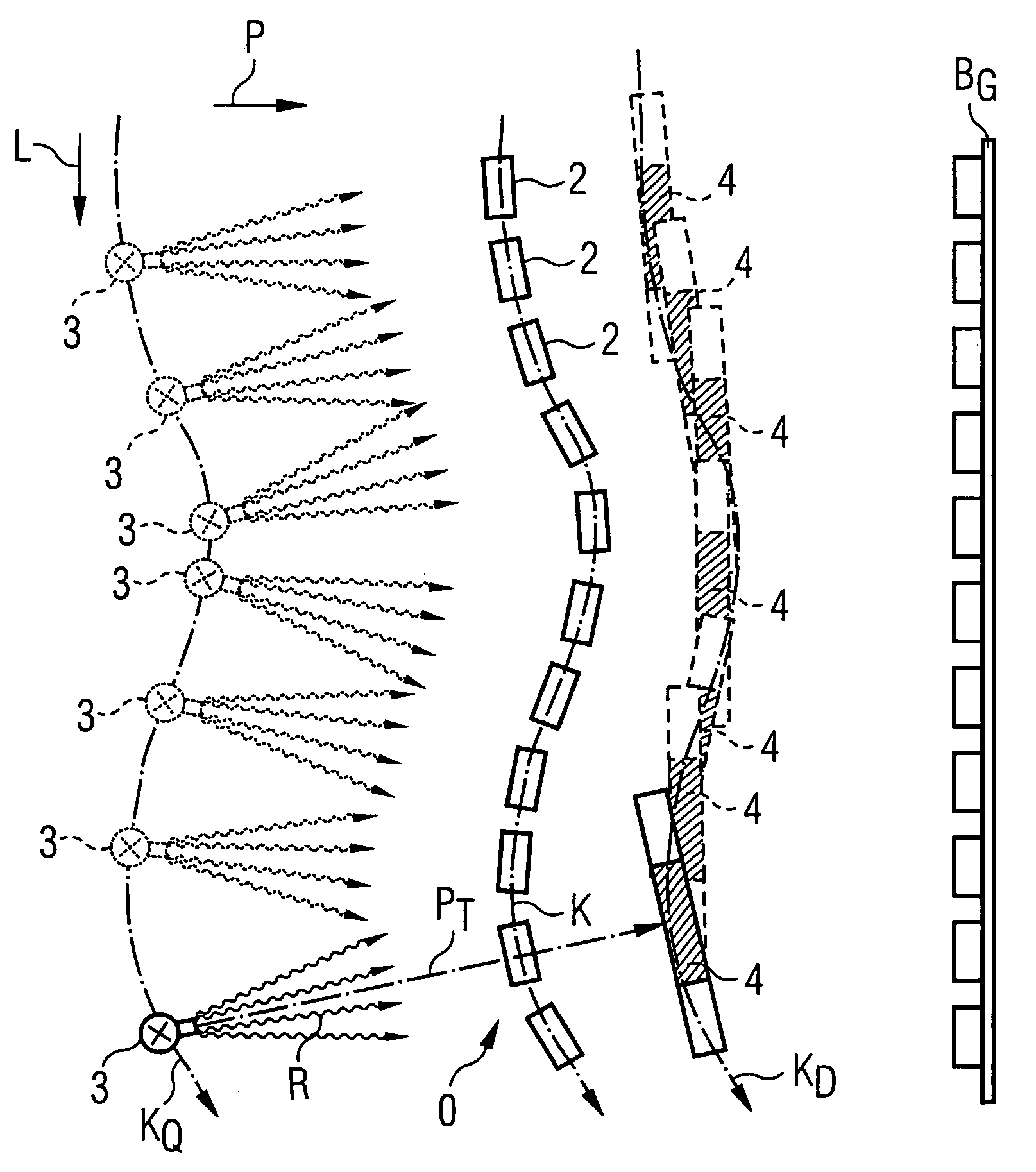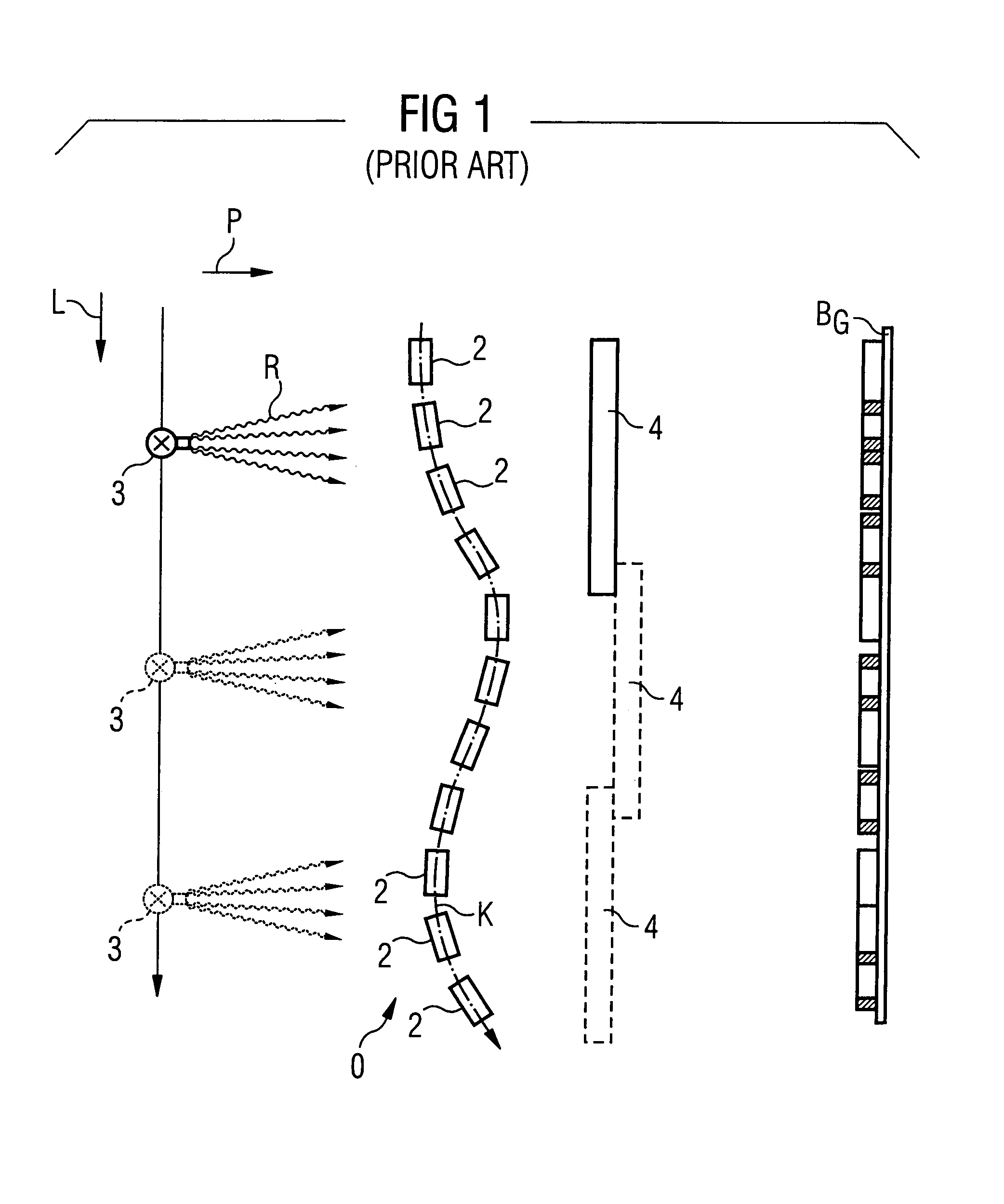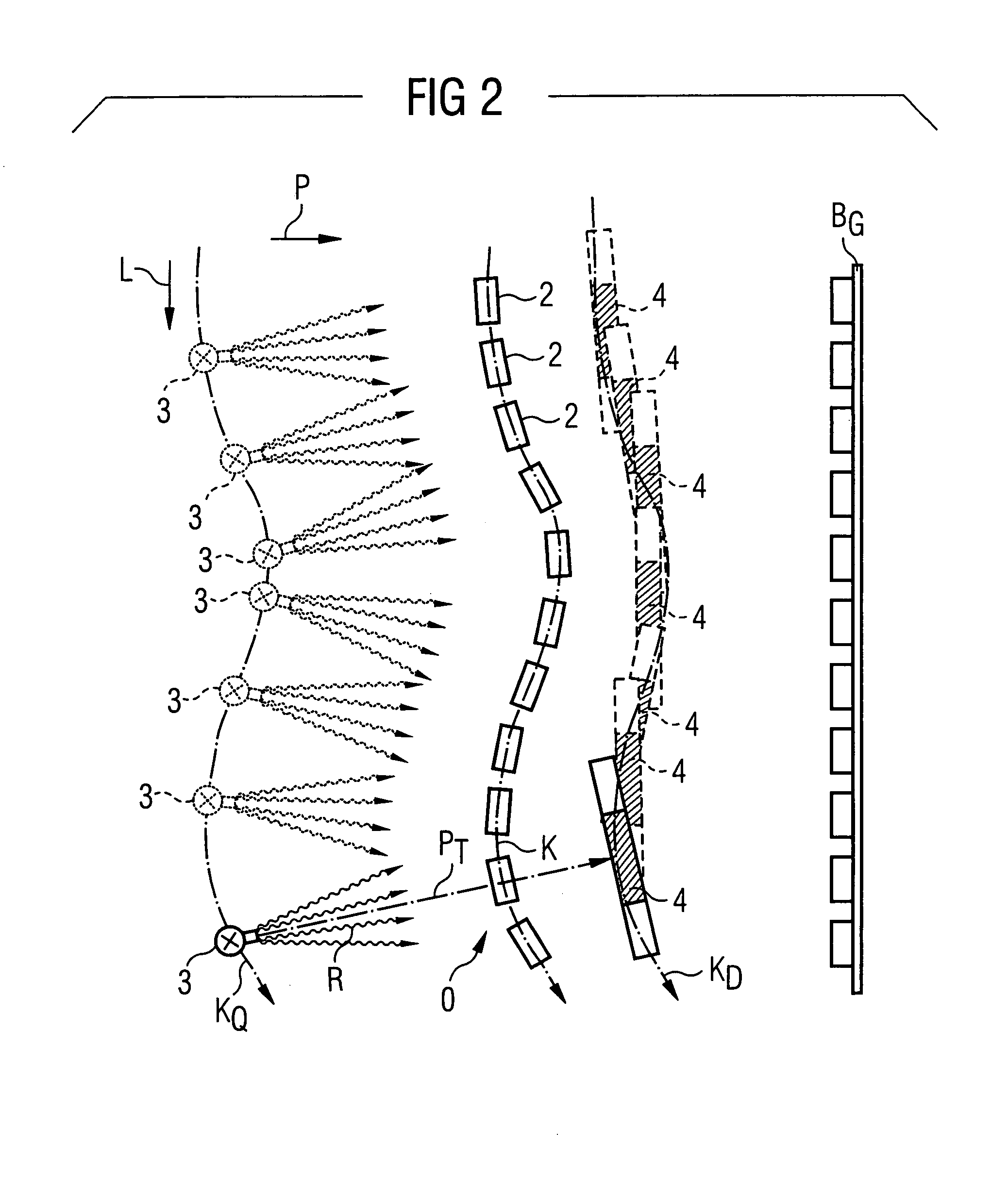Method and system for generating an x-ray exposure
a technology of exposure and x-ray, applied in the field of generating an exposure, can solve the problems of disadvantageous creation of shadow formation, achieve the effects of reducing distortion artifacts, facilitating image series production, and improving projection geometry
- Summary
- Abstract
- Description
- Claims
- Application Information
AI Technical Summary
Benefits of technology
Problems solved by technology
Method used
Image
Examples
Embodiment Construction
[0030]In the figures and the further explanations, it is assumed that an optimally shadow-free representation of the spinal column of a person is generated by means of the inventive method. As previously explained, however, the invention is not limited to such an application.
[0031]FIG. 1 schematically shows as an exposure subject, the individual vertebras 2 of a spinal column O in a typical “double-s shape”. This spinal column O essentially extends in a longitudinal direction L.
[0032]Conventionally, a complete exposure of such a spinal column O is generated by an x-ray source 3 and an x-ray detector 4 being moved in tandem in front of and behind the spinal column O on straight lines parallel to the longitudinal direction L. At specific positions—here at three positions—partial exposures of adjacent sections of the spinal column O are generated. These partial exposures are then combined into an overall x-ray exposure BG. A problem with this acquisition method is that, due to the typi...
PUM
| Property | Measurement | Unit |
|---|---|---|
| angle | aaaaa | aaaaa |
| length | aaaaa | aaaaa |
| dimensions | aaaaa | aaaaa |
Abstract
Description
Claims
Application Information
 Login to View More
Login to View More - R&D
- Intellectual Property
- Life Sciences
- Materials
- Tech Scout
- Unparalleled Data Quality
- Higher Quality Content
- 60% Fewer Hallucinations
Browse by: Latest US Patents, China's latest patents, Technical Efficacy Thesaurus, Application Domain, Technology Topic, Popular Technical Reports.
© 2025 PatSnap. All rights reserved.Legal|Privacy policy|Modern Slavery Act Transparency Statement|Sitemap|About US| Contact US: help@patsnap.com



